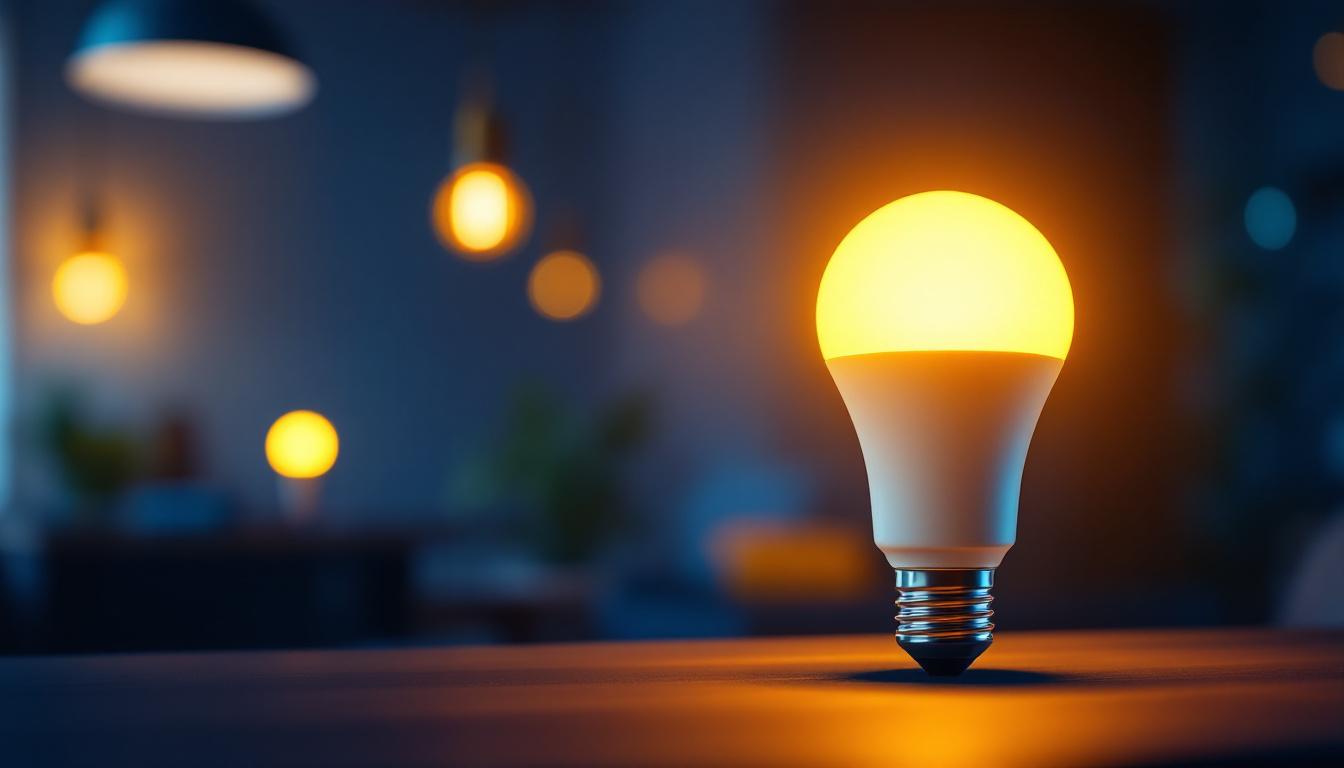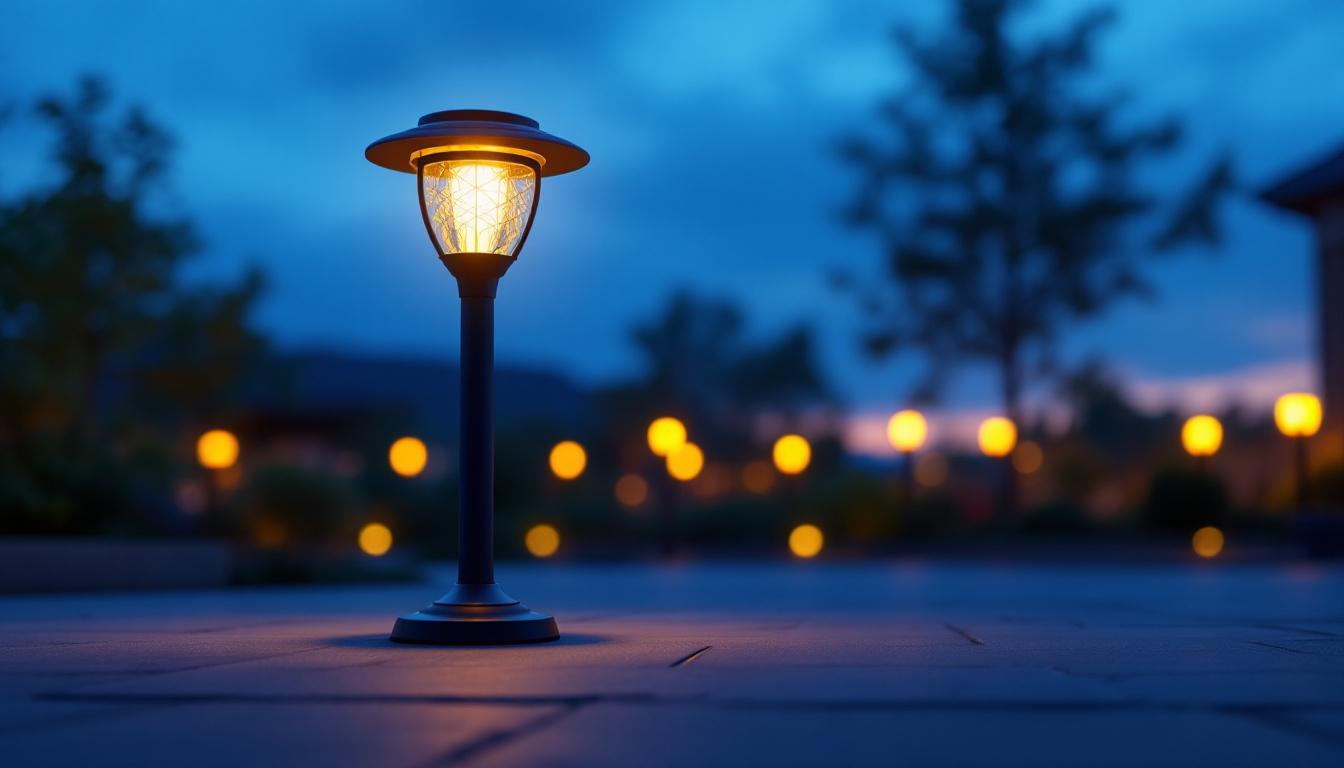
In the ever-evolving landscape of lighting technology, the introduction of the 300 W LED bulb has marked a significant turning point. This innovative lighting solution not only offers enhanced efficiency but also redefines the standards for illumination across various applications. For lighting contractors, understanding the implications of this advancement is crucial for staying competitive in a rapidly changing market.
The 300 W LED bulb is designed to deliver powerful illumination while consuming significantly less energy compared to traditional lighting options. This bulb is particularly beneficial for large spaces that require bright and consistent lighting, such as warehouses, commercial buildings, and outdoor areas. With advancements in LED technology, these bulbs are not only efficient but also versatile, making them suitable for a wide range of applications, from retail spaces to industrial settings.
One of the most compelling advantages of the 300 W LED bulb is its energy efficiency. Traditional incandescent and halogen bulbs consume more power to produce the same amount of light, leading to higher electricity bills. In contrast, LED technology can provide the same brightness with a fraction of the energy consumption. This efficiency is particularly crucial in environments where lighting is used extensively, as the cumulative savings can be significant over time.
For lighting contractors, this translates into substantial cost savings for clients over time. The reduced energy usage not only lowers monthly utility expenses but also minimizes the carbon footprint, aligning with the growing emphasis on sustainability in the industry. Additionally, many regions offer incentives or rebates for switching to energy-efficient lighting, further enhancing the financial benefits of adopting LED technology.
Another key benefit of the 300 W LED bulb is its impressive lifespan. Unlike traditional bulbs that may need frequent replacement, LED bulbs can last for tens of thousands of hours. This longevity reduces maintenance costs and downtime, making them an attractive option for large-scale installations. For businesses, this means less disruption and a more consistent lighting environment, which can enhance productivity and safety in the workplace.
Furthermore, LED technology is inherently more durable than traditional lighting solutions. The solid-state construction of LEDs makes them resistant to shocks, vibrations, and extreme temperatures, ensuring reliable performance in various environments. This resilience is particularly advantageous in outdoor settings, where weather conditions can be unpredictable. Moreover, many 300 W LED bulbs are designed with advanced heat dissipation features, which help maintain optimal performance and extend their lifespan even further, making them a smart investment for both short-term and long-term lighting needs.
The versatility of the 300 W LED bulb allows it to be used in a wide range of applications. From industrial settings to outdoor spaces, its powerful illumination capabilities make it suitable for numerous scenarios.
In industrial settings, the 300 W LED bulb is ideal for warehouses, factories, and distribution centers where bright, uniform lighting is essential for safety and productivity. These bulbs can illuminate large areas efficiently, helping to reduce shadows and improve visibility.
Commercial spaces, such as retail stores and shopping malls, also benefit from the use of 300 W LED bulbs. The ability to create a well-lit environment enhances the shopping experience, encouraging customers to browse and spend more time in the store. Additionally, strategically placed LED lighting can highlight specific products, drawing attention to promotions or new arrivals, which can significantly boost sales and customer engagement.
Outdoor applications are another area where the 300 W LED bulb shines. Whether for parking lots, street lighting, or sports facilities, these bulbs provide the brightness necessary to ensure safety and security during nighttime hours. Their energy efficiency also makes them a cost-effective solution for municipal lighting projects.
Moreover, the ability to withstand harsh weather conditions makes the 300 W LED bulb a reliable choice for outdoor installations. With proper housing and fixtures, these bulbs can perform well in rain, snow, and extreme temperatures, ensuring longevity and reliability. In addition to their durability, many 300 W LED bulbs are designed with advanced thermal management systems that prevent overheating, further extending their lifespan and maintaining consistent performance. This makes them an excellent choice for outdoor events, festivals, and sports tournaments, where dependable lighting is crucial for both participants and spectators alike.
The lighting industry is increasingly focusing on sustainability, and the 300 W LED bulb plays a crucial role in this shift. By reducing energy consumption and extending the lifespan of lighting solutions, LEDs contribute to a more sustainable future.
Switching to 300 W LED bulbs can significantly lower the carbon footprint of lighting systems. With less energy required to produce the same amount of light, the overall demand for electricity decreases, leading to reduced greenhouse gas emissions from power plants.
This is particularly important as more companies and municipalities aim to meet sustainability goals. By promoting the use of energy-efficient lighting solutions, lighting contractors can help their clients achieve these objectives while also enhancing their own reputation as environmentally responsible businesses.
Another environmental advantage of the 300 W LED bulb is its recyclability. Unlike traditional bulbs that may contain hazardous materials, LEDs are often made from materials that can be recycled. This reduces the amount of waste sent to landfills and contributes to a circular economy.
Lighting contractors can educate their clients about proper disposal and recycling methods for LED bulbs, further promoting sustainable practices within the industry. By taking these steps, contractors not only help the environment but also position themselves as leaders in responsible lighting solutions.
In addition to their environmental benefits, 300 W LED bulbs offer significant energy efficiency that translates into substantial cost savings for consumers and businesses alike. Compared to traditional incandescent and halogen bulbs, LEDs use up to 80% less energy, which can lead to lower electricity bills over time. This financial incentive encourages more users to make the switch, further amplifying the positive impact on the environment.
Moreover, the long lifespan of LED bulbs, often exceeding 25,000 hours, means that replacements are less frequent, reducing the need for manufacturing and transportation of new bulbs. This longevity not only saves money but also minimizes the resources consumed in the production and distribution processes, reinforcing the case for adopting LED technology in both residential and commercial settings.
While the 300 W LED bulb offers numerous benefits, there are also challenges and considerations that lighting contractors must address when integrating this technology into their projects.
The initial cost of 300 W LED bulbs can be higher than that of traditional lighting options. This upfront investment may deter some clients, particularly those with tight budgets. However, it is essential to communicate the long-term savings associated with energy efficiency and reduced maintenance costs.
Contractors can provide clients with detailed analyses demonstrating the return on investment (ROI) over time. By illustrating the savings on energy bills and the extended lifespan of LED bulbs, contractors can help clients see the value in making the switch.
Another consideration is the compatibility of 300 W LED bulbs with existing lighting systems. In some cases, retrofitting may be necessary to accommodate the new technology. This could involve replacing fixtures or making adjustments to electrical systems.
Lighting contractors should assess the current infrastructure before recommending LED solutions. By conducting thorough evaluations, they can ensure a smooth transition and minimize disruptions during installation.
The introduction of the 300 W LED bulb is just the beginning of a broader trend toward advanced lighting solutions. As technology continues to evolve, the lighting industry will likely see further innovations that enhance efficiency, performance, and sustainability.
One exciting development is the integration of smart technology with LED lighting. The ability to control lighting remotely, adjust brightness levels, and set schedules can significantly enhance the functionality of 300 W LED bulbs. This not only improves energy efficiency but also provides users with greater control over their lighting environments.
Lighting contractors should stay informed about these advancements and consider how they can incorporate smart lighting solutions into their offerings. By doing so, they can provide clients with cutting-edge technology that meets modern demands.
As the demand for energy-efficient lighting grows, ongoing research and development in LED technology will likely lead to even more efficient and powerful bulbs. Innovations may include improvements in color rendering, brightness, and energy consumption.
Lighting contractors who keep abreast of these developments will be better positioned to offer the latest solutions to their clients, ensuring they remain competitive in the market.
The 300 W LED bulb represents a significant advancement in lighting technology, offering numerous benefits that can transform the way spaces are illuminated. From energy efficiency and cost savings to environmental sustainability, this innovative solution provides lighting contractors with a powerful tool to enhance their offerings.
As the industry continues to evolve, embracing the 300 W LED bulb and its associated technologies will be crucial for contractors looking to remain relevant and competitive. By understanding the advantages, applications, and challenges of this game-changing lighting solution, contractors can better serve their clients and contribute to a more sustainable future.
Ready to harness the power of the 300 W LED bulb and revolutionize your lighting projects? At LumenWholesale, we provide lighting contractors with the highest quality, spec-grade lighting products at prices that can’t be beaten. Say goodbye to local distributor markups and hello to our extensive selection that meets rigorous industry standards. With free shipping on bulk orders, you can trust that you’re getting premium lighting solutions at the best value — all with the convenience and affordability you deserve. Elevate your lighting game and make a sustainable impact with LumenWholesale. Wholesale Lighting at the Best Value is just a click away.

Discover why lighting contractors should prioritize round solar lanterns in their projects.

Discover the hidden opportunities in low voltage wire clearance sales that lighting contractors frequently miss.

Discover the ultimate guide for lighting contractors with “Light Phoenix.” Uncover top resources, expert tips, and innovative strategies to master the art of lighting design and installation.

Discover the frequent pitfalls lighting contractors face when installing outdoor solar flood lights.